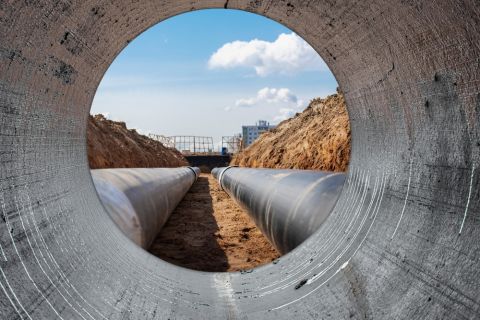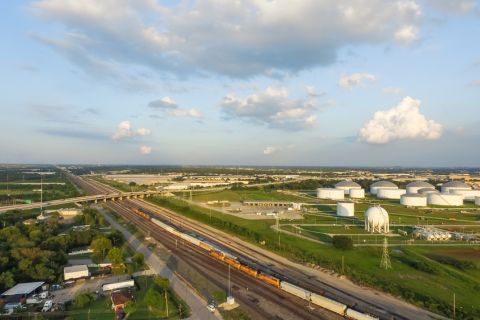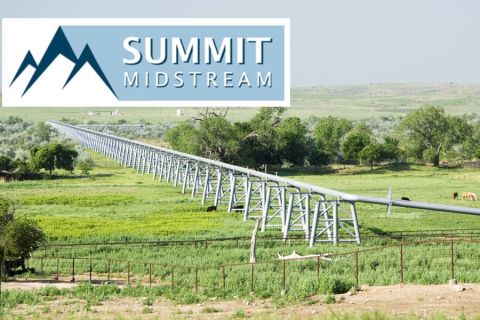Oh, to be in the midstream energy business during the great paradigm shift from slow-and-steady decline to sky’s-the-limit-let’s-move-those-barrels growth.
“2013 was a phenomenal year,” said Suzanne Minter, Bentek’s manager of oil and gas consulting services at the recent Platts Crude Oil Americas conference in Houston. “2012 was great, but 2013 was even more prolific. You look at the last two years,” she said, adding:
• “2012—we grew an average of 10% year-on-year of crude out of the U.S.;
• 2013—we grew 17% or almost 1.2 million barrels [bbl.] per day.
“Our outlook for this year is actually more aggressive volumetrically. We’re looking for 4 million bbl. per day.”
Beyond the numbers, what does “phenomenal” mean in this new mindset? Mark Finley, BP’s general manager of global energy market, places this period into a long-term perspective:
“For two years in a row, the U.S has had the greatest growth in oil production in the world and in each of those years, it’s also been the biggest for the U.S., going all the way back to Col. Drake at Titusville,” Finley told the Platts conference crowd. “Only one country ever has had a bigger incremental growth of oil production than the U.S. did last
year, and that is Saudi Arabia.
“Now the Saudis have done it several times, but most of the times that the Saudis have had a bigger one-year growth in
production, it was when there was a crisis in the world, and they were tapping spare production capacity. There have only been, in our data, three other times that the Saudis had organic growth of production that was as big as the U.S. had last year. So, truly, these are increases of historic proportions.”
Moving the bounty
Historic growth requires historic levels of new infrastructure. At the moment, pipelines capable of moving 3 million bbl. per day are under construction in the U.S., but it is rail that has driven the boom, Minter said.
“Pipelines are fantastic, they’re cheap, but they get you to very limited locales,” Minter said.
“East and West Coast refiners, who have historically been dependent upon waterborne Brents [crude oils], or Alaskan North Slope crude, have been the beneficiaries of rail build-out,” she said. “Rail is quick, it is responsive, it is relatively inexpensive to build a terminal. Because of the rapidity that we’ve been able to build the rail infrastructure in North America, we’ve been able to grow crude at these unprecedented rates.
“Unlike natural gas, unlike natural gas liquids before it, we don’t have to wait for a pipeline (with crude oil),” she continued. “These rail projects are real. Last year, we moved an estimated 1 million bbl. per day across North America
via rail. We anticipate that by 2018, that number will look more like 1.9 million bbl. per day.”
Stephen Bradley, vice president of oil marketing at Continental Resources, agreed that rail facilities are relatively easily expanded and growth will come rapidly. He sees an expansion from the current 1 million bbl. per day to 1.25 million bbl. per day by year-end 2014. By 2015, rail takeaway will hit 1.55 million bbl. per day, Bradley said, and reach 1.85 million bbl. per day by 2016.
In the Bakken shale, where Continental is the leading producer of light, sweet crude (105,000 bbl. per day), Bradley looks forward to the impact of three new pipelines coming onstream:
• Sandpiper: Capacity around 235,000 bbl. per day; delivers into upper Midwest;
• Keystone XL extension: Bakken capacity about 200,000 bbl. per day; delivers to the Cushing, Oklahoma, trading hub; and
• Energy Transfer Dakota Express: Capacity about 250,000 bbl. per day; delivers into the St. James, Louisiana, crude market.
“These numbers mean that we are good to go through 2016, using realistic trade numbers and assuming that only three viable pipelines are built,” Bradley said. “The bottom line is that I don’t think that takeaway capacity is ever exceeded
in the Bakken.”
The downside of this production abundance, of course, is a supply/demand imbalance.
“Infrastructure projects will help bring these barrels to market, yet we’ve done very little to create incremental demand within the North American continent,” Minter said. “And because of that, the light market, in our mind, should become pretty aggressive, pretty competitive here in the near term. By the end of the year, we believe we will have pushed out all of our light, sweet imports that are waterborne into the U.S.”
Global trade has been jostled by this sea change, a result of both production increases and increased energy efficiency in the U.S.
“Already the United States in the last seven years or so has reduced import dependence by an amount equivalent to removing the world’s third-biggest oil consumer from the marketplace—Japan,” said Finley of BP. “That’s how big the reduction of imports has been already in the U.S.”
Weight-watching
But the industry does not live on light, sweet alone, even with ramped-up output of those stocks from the Eagle Ford, Utica and other plays.
“Quality of the crude will be a key factor going forward,” Minter said. “Not all barrels are created equal. A large component of the growth will come in the form of a light and a condensate barrel. Most of the heavy oils will come from
Canada, most of the intermediates will be our offshore production, and the light and ultra-light condensate barrels will come from the Lower 48.”
Refiners are looking for barrels with gravities between 37° API and 39° API. That weight allows them to produce the products that will make them the most money in the global market, i.e., diesel and motor oil. Ultra-light barrels yield a lot of naphtha, which is not a premium product. That excess naphtha will be dumped on global markets with what Minter and Bentek believe will result in dramatic price implications between now and 2018.
And supply keeps growing.
“In 2013, we brought rigs back into the North American fleet,” she said. “Prices incentivized it and demand is actually incentivizing it. So last year we had an increase to the rig fleet, and that in itself should bring more production online. It does not take into consideration, though, the increases in efficacy that we’ve seen in those rigs. So couple the increased rig count with the fact that each rig is significantly more effective than it was even in January 2012.”
Excess supply is a concern because of the downward price pressure exerted on the oil coming out of the middle of the country.
“The last remaining market option for Bakken producers is the West Coast, or California, which will be a bit slow due to the regulatory environment that has to be dealt with in order to establish delivery points,” said Bradley. “Although taking time, there will be a growing market in California for Bakken crude oil as unit train facilities are brought online.”
But even price slippage will not cut short this party.
“In the $100 [bbl.] market, where we currently are, most plays win, everybody’s happy, the Bakken and the Eagle Ford are great places to be,” Minter said. “We estimate, based on what producers are telling us, that return on investment in some plays is as high as 80%. Most plays in the oil and wet windows, though, return in excess of 20% and some significantly more. Bring it down to $80 a bbl. and many plays are still very attractive and return in excess of 50%. Even down to $60 back to the wellhead, many plays return in excess of 20%.”
Joseph Markman can be reached at jmarkman@hartenergy.com or 713-260-5208.
Recommended Reading
Report: Crescent Midstream Exploring $1.3B Sale
2024-04-23 - Sources say another company is considering $1.3B acquisition for Crescent Midstream’s facilities and pipelines focused on Louisiana and the Gulf of Mexico.
Targa Resources Forecasts Rising Profits on 2024 Exports
2024-02-20 - Midstream company Targa Resources reports a record fourth quarter in volumes and NGL fractionation.
Midstream Operators See Strong NGL Performance in Q4
2024-02-20 - Export demand drives a record fourth quarter as companies including Enterprise Products Partners, MPLX and Williams look to expand in the NGL market.
Summit Midstream Launches Double E Pipeline Open Season
2024-04-02 - The Double E pipeline is set to deliver gas to the Waha Hub before the Matterhorn Express pipeline provides sorely needed takeaway capacity, an analyst said.
Kinder Morgan Sees Need for Another Permian NatGas Pipeline
2024-04-18 - Negative prices, tight capacity and upcoming demand are driving natural gas leaders at Kinder Morgan to think about more takeaway capacity.





